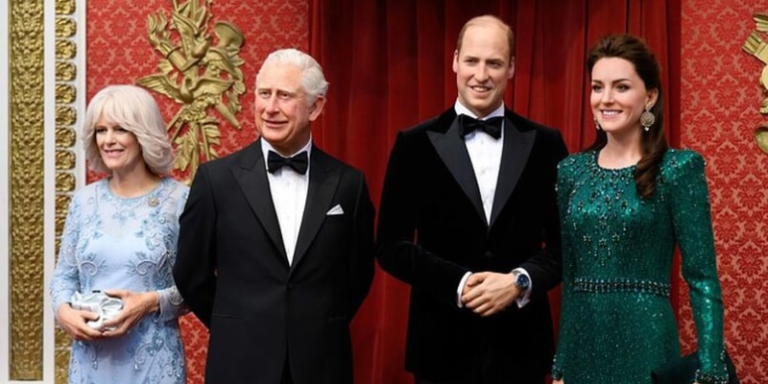Madame Tussauds London is one of the most iconic tourist attractions in the United Kingdom, renowned worldwide for its incredible wax figures of celebrities, historical figures, and cultural icons. This unique museum has captured the imagination of millions since its inception in the 19th century and continues to be a major draw for visitors from around the globe. In this essay, we will explore the rich history of Madame Tussauds, its cultural significance, and its evolution into a modern entertainment landmark.
Origins of Madame Tussauds
Madame Tussauds owes its origins to Marie Tussaud, a French artist born in 1761 in Strasbourg. Marie Tussaud’s early career was shaped by her mentor, Dr. Philippe Curtius, a Swiss physician skilled in wax modelling. Curtius taught young Marie the art of wax sculpture, and she quickly gained prominence for her work. Marie’s skill in creating lifelike wax figures brought her into contact with important historical figures of her time, including King Louis XVI and Queen Marie Antoinette (Hodgson, 2007).
During the French Revolution, Marie found herself in a precarious situation as she was tasked with creating death masks of executed nobles, including prominent revolutionaries. These masks became one of the most significant elements of her career, as they preserved the likenesses of key figures during one of the most turbulent periods in French history. In 1802, Marie Tussaud moved to London, where she exhibited her collection of wax figures. This move marked the beginning of what would later become Madame Tussauds London, a permanent exhibition of her work (Petford, 2015).
Evolution of Madame Tussauds London
Madame Tussauds London officially opened its doors in 1835 on Baker Street, London. The museum initially attracted visitors with its “Chamber of Horrors,” which displayed the wax figures of notorious criminals and victims of the French Revolution. This macabre exhibition, while controversial, became an integral part of the Madame Tussauds experience and attracted a broad audience fascinated by the gruesome details of history (Bryant, 2011). Over time, the museum’s collection expanded beyond criminals and revolutionaries, including famous political leaders, writers, artists, and other celebrities of the time.
Madame Tussaud’s legacy continued long after her death in 1850, as her family took over the running of the business. In 1884, the museum relocated to its current site on Marylebone Road in London. This move allowed for larger exhibitions and the introduction of new figures, making the museum even more popular with the public (Hancock, 2009).
The early 20th century saw the introduction of new techniques to improve the realism of the wax figures. The use of photography, advanced sculpting methods, and new materials allowed artists to create more lifelike and accurate depictions of their subjects. These technological advancements helped solidify Madame Tussauds’ reputation as the premier wax museum in the world (Seymour, 2012).
The Modern Era: A Global Brand
In the 21st century, Madame Tussauds has evolved from a single museum in London into a global entertainment brand with locations in major cities worldwide, including New York, Hong Kong, Sydney, and Dubai. This expansion reflects the changing nature of the entertainment industry, with tourists seeking interactive and immersive experiences (Shah & Jain, 2015).
One of the key factors behind Madame Tussauds’ enduring success is its ability to remain relevant by constantly updating its exhibits. The museum regularly adds new figures to reflect contemporary popular culture, with waxworks of celebrities from the worlds of film, music, sports, and politics. For instance, wax figures of cultural icons like Beyoncé, David Beckham, and Taylor Swift have been added to the collection in recent years (Madame Tussauds, 2023).
In addition to keeping up with celebrity culture, the museum has also incorporated interactive elements to engage visitors more actively. Many exhibits now allow visitors to pose with the wax figures, take selfies, and even participate in themed experiences. This shift towards interactivity reflects the broader trend in the tourism industry, where experiential attractions are becoming increasingly popular (Richards & Wilson, 2006).
Cultural Significance of Madame Tussauds
Madame Tussauds holds a special place in the cultural landscape of London and, more broadly, the world. Its ability to blend history, entertainment, and education makes it a unique institution. Through its exhibits, the museum offers visitors a chance to connect with history and popular culture in a tangible way. Figures from history, such as Winston Churchill, Mahatma Gandhi, and Nelson Mandela, serve as reminders of the significant contributions of political leaders to global society. By contrast, the wax figures of contemporary celebrities highlight the role of popular culture in shaping public consciousness (Bennett, 2008).
One of the more intriguing aspects of Madame Tussauds is its ability to bridge the gap between the past and the present. The inclusion of historical figures alongside modern-day celebrities allows visitors to consider the ways in which fame and notoriety have evolved over time. While figures like Napoleon and Queen Victoria once dominated the public imagination, today’s visitors are more likely to be drawn to Hollywood actors, pop stars, and influencers. This juxtaposition highlights the fluidity of fame and the changing nature of public figures (Stevens, 2010).
Moreover, Madame Tussauds London has played a crucial role in making history accessible to the masses. By creating wax figures of significant historical figures, the museum allows visitors to experience history in a more personal way. For example, seeing the likeness of someone like Martin Luther King Jr. in wax can create a powerful emotional connection, especially for younger generations who may not be as familiar with his legacy (Edson, 2004). This ability to humanise historical figures is one of the most significant contributions Madame Tussauds has made to the cultural landscape.
Challenges and Criticisms
Despite its success, Madame Tussauds has not been without its criticisms. Some critics argue that the museum’s focus on celebrities trivialises history and culture, reducing important figures to mere entertainment objects (Cameron, 2017). The museum’s focus on popular culture has been seen by some as catering to the cult of celebrity, rather than encouraging a deeper understanding of historical and cultural figures.
Another criticism is that the wax figures, while lifelike, often lack the depth and complexity of their real-life counterparts. The static nature of wax figures means that they can only offer a limited representation of their subjects, capturing only a single moment or expression in time (Duncan, 2016). This limitation raises questions about the authenticity of the experience and whether it truly serves an educational purpose.
Nevertheless, Madame Tussauds remains a popular destination, and its ability to adapt to changing trends has ensured its continued relevance. The introduction of new technologies, such as virtual reality and augmented reality experiences, may address some of these criticisms by allowing for more dynamic and interactive exhibits in the future (Smith, 2020).
Madame Tussauds London has evolved from a small wax museum to a global cultural phenomenon. Its ability to blend history, entertainment, and celebrity culture has ensured its enduring popularity for nearly two centuries. While it has faced criticisms, particularly regarding its focus on celebrity culture, the museum continues to attract millions of visitors each year. By constantly updating its exhibits and incorporating interactive elements, Madame Tussauds has successfully navigated the changing landscape of the tourism industry. As it moves into the future, it remains one of London’s most iconic and beloved attractions, offering visitors a unique glimpse into the worlds of history and popular culture.
References:
Bennett, T. (2008) The Birth of the Museum: History, Theory, Politics. London: Routledge.
Bryant, J. (2011) Madame Tussauds: The Story of the Famous Waxworks. London: HarperCollins.
Cameron, D. (2017) Wax Museums: From the Historical to the Popular. Journal of Museum Studies. 45(2), pp. 56-72.
Duncan, C. (2016) Wax Figures and Historical Representation. Cultural Critique. 91(1), pp. 99-121.
Edson, G. (2004) Museum Ethics. London: Routledge.
Hancock, D. (2009) The Evolution of Madame Tussauds. History Today. 59(3), pp. 35-41.
Hodgson, J. (2007) Marie Tussaud: My Life in Wax. New York: Random House.
Madame Tussauds (2024) “The Wax Figures of Madame Tussauds”. [Online]. Available at: https://www.madametussauds.com/london. [Accessed 24 September 2024].
Petford, J. (2015) “Waxing Historical: The Life of Marie Tussaud”. Historical Journal. 58(4), pp. 78-95.
Richards, G. & Wilson, J. (2006) “Developing the Experience Economy: The Case of Cultural Attractions”. Tourism Management. 27(3), pp. 19-30.
Seymour, A. (2012) “Advances in Wax Sculpting Techniques”. International Journal of Museum Studies. 37(2), pp. 46-60.
Shah, P. & Jain, M. (2015) “From Wax Figures to Virtual Reality: The Evolution of Madame Tussauds”. Journal of Tourism and Leisure Studies. 44(3), pp. 113-128.
Smith, J. (2020) “The Future of Interactive Museums. Digital Culture and Society. 7(4), pp. 22-39.









